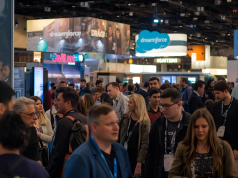Indeed and Glassdoor cut staff as AI ramps up. Are “AI pivots” a smart evolution—or corporate PR spin?
The Tech-Driven Talent Recalibration
When Indeed and Glassdoor announced a combined layoff of 1,300 employees last week, the rationale was familiar: strategic focus, market alignment, operational efficiency. But beneath the buzzwords was a telling phrase—“accelerated AI adoption.”
We’ve entered a new era where artificial intelligence isn’t just augmenting talent—it’s replacing it. Not in some distant, speculative future, but right now. The C-suite is no longer just talking AI. It’s reorganizing around it.
What does it mean when companies pivot to AI while laying off the humans who once defined their product? The line between innovation and obsolescence is getting blurrier—and sharper—at the same time.
The AI Excuse or Strategy?
AI is an easy headline. But for workers on the ground, the impact feels less like innovation and more like a guillotine.
So, what’s really going on?
On one hand, AI can streamline repetitive workflows, reduce operational costs, and unlock new product capabilities. On the other, companies have a long history of masking cost-cutting under the guise of “digital transformation.”
The truth? It’s often both. AI is improving productivity. But it’s also becoming a convenient umbrella to justify trimming headcount—particularly in roles that are harder to quantify but easier to automate.
Talent Strategy or Optics Play?
Let’s call it what it is: AI is becoming a talent strategy. But it’s one with layers:
- Efficiency optics: Investors love hearing about leaner ops and smarter tech.
- Innovation narrative: Companies can position layoffs as part of a “bold evolution.”
- Internal signaling: The message is clear—upskill, or be replaced.
This isn’t just restructuring. It’s rebranding.
What Gets Lost in the Hype
Behind every layoff is a loss of institutional memory, mentorship bandwidth, and team continuity. AI doesn’t replace those. At least, not yet.
Here’s what companies risk when they go all-in on AI without a people plan:
- Customer empathy gaps: Chatbots can’t decode nuance the way humans do.
- Culture erosion: Replacing contributors with code hollows out morale.
- Innovation plateau: Diverse ideas arise from lived experiences, not just algorithmic predictions.
The speed of AI must be matched by depth in human understanding—or it’s just speed in the wrong direction.
Rethinking the Productivity Equation
It’s tempting to see productivity as a simple input-output formula. But real productivity—the kind that drives long-term growth—requires trust, collaboration, and creativity.
When layoffs precede or accompany automation, remaining employees often experience:
- Survivor’s guilt
- Increased workloads without clarity
- Fear-driven compliance instead of innovation
AI can’t fix that. Managers can. Culture can. Strategy can.
What a Balanced Approach Looks Like
Smart organizations aren’t just replacing—they’re re-skilling. They’re asking:
- How can AI amplify human work rather than replace it?
- Where can automation free up time for higher-impact efforts?
- How do we keep our workforce aligned—not afraid?
Examples include:
- Creating AI fluency bootcamps across functions.
- Offering transition pathways for impacted roles.
- Building cross-functional AI councils with employees at the table.
It’s not about resisting the future—it’s about designing it thoughtfully.
The Ethics of AI Layoffs
There’s a moral dimension too. Is it ethical to displace workers without giving them a fair shot to evolve with the technology?
Especially when:
- The tools aren’t always mature.
- The ROI case isn’t yet proven.
- The displaced aren’t included in the decision-making.
Short-term savings often become long-term reputation risks—especially in industries reliant on trust, creativity, and loyalty.
What Workers Need to Hear
If you’re a leader navigating this shift, transparency is non-negotiable. Employees deserve more than jargon. They need:
- Clarity: What does “AI pivot” actually mean for my job?
- Support: What tools or training will I get?
- Voice: Who’s deciding how AI is used—and why?
Silence creates fear. Conversation builds resilience.
Intersecting Trends to Watch
AI-driven layoffs don’t exist in a vacuum. They’re overlapping with:
- The return-to-office debate (who gets flexible, who gets watched)
- Workforce loneliness (see Lonely at Work)
- Quiet disengagement (see The Rise of Quiet Cracking)
These forces are shaping a new social contract between employers and employees—one built less on perks and more on transparency, fairness, and adaptability.
Final Thoughts
AI is here. But whether it’s a lever for growth or a cudgel for cost-cutting depends on how leaders wield it.
Talent isn’t just code to be refactored. It’s trust, lived experience, and future potential.
Let’s not trade people for performance. Let’s build performance with people—and use AI to unlock their best, not replace it.
Related Reads: Explore Office Paranoia to understand how tech-driven shifts affect psychological safety. Or revisit The Rise of Quiet Cracking to see how cultural signals lead to quiet exits.
Curious how AI fits your talent strategy? Drop us a line at [email protected] or DM @TheWorkTimes on LinkedIn. We’re here to talk people and platforms.




























